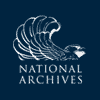George Washington to Colonel Timothy Pickering, 27 April 1781
To Colonel Timothy Pickering
Head Quarters New Windsor 27th April 1781.
Sir
There was never any regular formation of the department of Geographer to the Army, but to the best of my recollection Mr Erskines pay was to have been four dollars ⅌ day and that of his Assistants two dollars ⅌ day—Chain Bearers half a dollar ⅌ day and an allowance for the contingent expences of travelling when out of reach of the Magazines of the Army and for the purchase of the Instruments and other necessaries of Office. I see, in the heads of a plan which Mr Erskine had drawn up for the Committee of Arrangement last summer, he mentions that three dollars ⅌ day were to have been allowed to some of his principal Assistants.1 I therefore make no doubt but it was to have been so, and that it may have escaped my Memory. If any charge of that nature is made in his Account—it is to be allowed.
I do not remember that any allowance was to be made for saddle Horses for Mr Erskines personal use, except finding them forage—The department was to be supplied with a Waggon & Horses—I mention this, because Mr De Witt tells me Mr Erskine has made a charge to the public of a saddle Horse of his own which died while he was in the service.2 I am &.
Df, in Tench Tilghman’s writing, DLC:GW; copy, DNA:PCC, item 41; Varick transcript, DLC:GW. Tilghman docketed the draft: “directions respecting settlement of Mr Erskines Accounts.” On the bottom of the copy, Charles Pettit, then former assistant quartermaster general, signed a statement dated at Philadelphia on 12 May 1782: “The foregoing is a true Copy of an original Letter filed in my Office with the Accounts of Mr Robert Erskine late Geographer to the Army, which Copy is now given and certified at the request of Mr DeWitt” (see n.2 below).
1. GW had appointed Robert Erskine as the first geographer and surveyor to the Continental army (see GW to the Continental Congress Committee to Inquire into the State of the Army, 19 July 1777, and Erskine to GW, 1 Aug. 1777). Erskine outlined his plan when he wrote New York delegate Philip Schuyler, then a member of the Committee at Headquarters, from Morristown, N.J., on 7 May 1780: “In pursuance to your desire, I beg leave to lay before you, a state of the surveying department, for the purpose of its being adjusted as shall be thought proper by the honorable Committee of Congress appointed to regulate the different departments of the Army. …
“The number of Assistant surveyors has varied from two, to six; the mean number employed for a constancy, I suppose to be one Assistant draughtsman, three field surveyors, and eighteen Chain bearers from the line. …
“The charges already incurred from this business, have consisted in the surveyors pay of four, three, and two dollars per day; Chainbearers at half a dollar; travelling expences; the purchase of provisions when beyond the reach of drawing rations; of forage and horses when they could not be had otherewise; and of instruments, Maps, drawing paper &c. &c. …
“In the spring of 1777, I began to do business for the public, by making a sketch of the Country for General Lee; A Map of the Jerseys for his Excellency General Washington, from materials furnished by Lord Sterling; and a few trivial surveys at New Windsor; but did not engage fully in the Continental service, or receive pay till the first of June 1778, then the Commander in Chief honored me with a Commission as Geographer and surveyor to the Army. At this time, on my pay becoming the subject, I observed that the stated price in britain, which myself and others of my profession received, was a guinea a day, and expences; but as at this rate, such pay would have exceeded that of a Major General, Four dollars and four rations were proposed, with which I readily acquiesced; not only as I entered into the service without the view of making a profit or a fortune, but because His Excellency had left the determination of this point; almost solely to my own decision: however it is proper here to observe that I looked on the four dollars as a gratuity, which at some future time would be equivalent to so much hard money.”
Turning from personal concerns, Erskine concluded “that the original protractions of Roads and places already surveyed by the Geographers of the Army, are contained in upwards of two hundred & fifty different sheets of paper; that with a proper number of hands, which I suppose to be five surveyors, and two draughtsmen, such additional surveys of the roads and rivers might be taken in the course of a year, as would afford sufficient data for the forming an accurate Map of the Middle states; and, that though there would be occasion at any rate, for Geographers to attend the Army, in order to survey and lay down particular districts, on a large scale, and other purposes; yet the best way to execute this general business with accuracy and dispatch, especially if extended to the other states, would be the establishing a permanent Office, for this purpose, but still under the direction and disposal of the Commander in Chief, during the War” (DNA:PCC, item 11).
2. For Simeon DeWitt’s appointment as geographer to the Continental army following Erskine’s death, see Dewitt to GW, 23 Nov. 1780; GW to Samuel Huntington, 26 Nov.; and Huntington to GW, 6 Dec.; see also the source note above.

![University of Virginia Press [link will open in a new window] University of Virginia Press](/lib/media/rotunda-white-on-blue.png)
